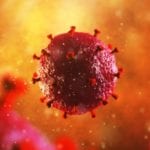 Miscellaneous
Miscellaneous  Miscellaneous
Miscellaneous  History
History 10 Huge Historical Events That Happened on Christmas Eve
 Music
Music 10 Surprising Origin Stories of Your Favorite Holiday Songs
 History
History 10 Less Than Jolly Events That Occurred on December 25
 Weird Stuff
Weird Stuff 10 Funny Ways That Researchers Overthink Christmas
 Politics
Politics 10 Political Scandals That Sent Crowds Into the Streets
 Weird Stuff
Weird Stuff Ten Bizarre Facts About The Doge Meme
 Our World
Our World 10 Ways Your Christmas Tree Is More Lit Than You Think
 Movies and TV
Movies and TV The 10 Coolest Stars to Set Sail on The Love Boat
 History
History 10 Things You Didn’t Know About the American National Anthem
 Miscellaneous
Miscellaneous Top 10 Things Crypto Was Supposed to Change & What Actually Did
 History
History 10 Huge Historical Events That Happened on Christmas Eve
 Music
Music 10 Surprising Origin Stories of Your Favorite Holiday Songs
Who's Behind Listverse?

Jamie Frater
Head Editor
Jamie founded Listverse due to an insatiable desire to share fascinating, obscure, and bizarre facts. He has been a guest speaker on numerous national radio and television stations and is a five time published author.
More About Us History
History 10 Less Than Jolly Events That Occurred on December 25
 Weird Stuff
Weird Stuff 10 Funny Ways That Researchers Overthink Christmas
 Politics
Politics 10 Political Scandals That Sent Crowds Into the Streets
 Weird Stuff
Weird Stuff Ten Bizarre Facts About The Doge Meme
 Our World
Our World 10 Ways Your Christmas Tree Is More Lit Than You Think
 Movies and TV
Movies and TV The 10 Coolest Stars to Set Sail on The Love Boat
 History
History 10 Things You Didn’t Know About the American National Anthem
10 Amazing Survivors Of Killer Diseases
Everyone knows that diseases can be deadly. Every year, lethal pathogens infect healthy people, make them sick, and claim lives despite advances in medicine. However, sometimes, vulnerable people like the elderly and the unborn, or people infected by rare killers, unexpectedly beat the odds so soundly that hope is restored in the human body’s ability to fight for its own survival.
10 Brain-Eating Parasite
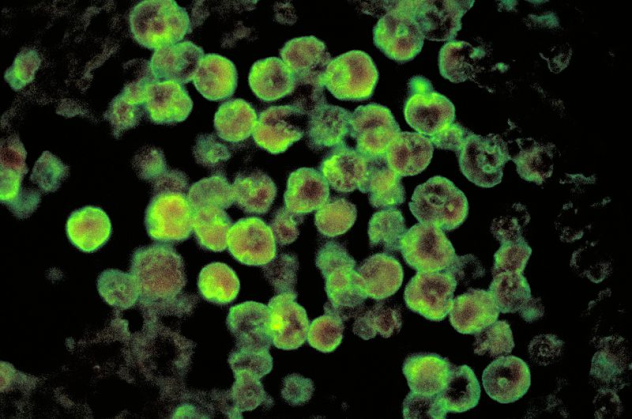
When 12-year-old Kali Hardig of Arkansas went swimming, she contracted a rare parasite, Naegleria fowleri, that travels up the nose and into the brain, which it then eats. When Kali, burning with fever, started to throw up, her mother rushed her to Arkansas Children’s Hospital. There, her family was given the gut-punching news that the condition, primary amebic meningoencephalitis (PAM), had less than a 1 percent survival rate. On top of that, she was one of the worst N. fowleri infections on record. Kali couldn’t breathe without a ventilator and was given the same anti-fungal medicine used in the treatments of the only two other known survivors of the disease. The infection was so rare that most doctors had never encountered it and had little knowledge on how to battle it, so Kali’s medical team opted for the unusual and untested.
They lowered her body temperature, a technique used with brain trauma patients to lessen the spread of damage in the brain. She was also given an experimental drug, originally created to battle breast cancer, which lab tests proved could kill microbes. Called miltefosine, the drug was still awaiting FDA approval when it was given to Kali. A couple of days later, her tests showed that the parasitic presence was gone.
Doctors are still not certain what exactly pulled the girl through. Miltefosine might have helped, in combination with early diagnosis, the anti-fungal medicine, and managing her increased brain pressure. But the FDA-unapproved drug didn’t save a boy with the same infection three years before. Considering the severity of her infection, Kali should’ve suffered the same fate, but seven weeks after her ordeal began, 22 days of which she fought in ICU, she was allowed to go home.
9 Katie McGuire

Katie McGuire won’t remember how close she came to never being born. While still in her mother’s womb, she developed a condition so lethal that only six infants had ever survived it. Her mother, Rosalin, from Scotland, was past the halfway mark in her pregnancy when doctors noticed something was wrong with the baby. Frighteningly, Katie’s heart was only working one-third of the rate it should’ve been beating. This was a symptom of a rare condition called anti-Ro La, where a mother’s blood develops antibodies which, without treatment, will result in heart damage for an unborn child. Death will result if the condition is left untreated.
One way to deal with it is to induce later-stage infants and treat them after birth, but Katie’s case was problematic. She was already too sick, and at 23 weeks of gestation, she was too young to survive outside of the womb. Katie’s doctors learned that five US children lived through the same dangerous medical situation after their pregnant mothers were given a course of corticosteroids. This helped the babies to endure less damage from the antibodies. By the time Mrs. McGuire was at the end of her pregnancy, she had received 77 shots of steroids. After her birth, Katie had to be fitted with a pacemaker, but she became the first Scottish baby to beat anti-Ro La.
8 Patrick Abram Jr.

In April 2010, a father and son, both called Patrick Abram, were together when the younger man mentioned that he had a sore throat. Concerned, his father noticed that it wasn’t the only symptom. Patrick’s jaw and left foot were also swollen, and his eyes appeared somewhat jaundiced. His father drove him to hospital, where he was diagnosed with rare killer called Lemierre’s syndrome.
In short, Lemierre’s can be said to be the deadliest sore throat ever. It occurs when there is serious inflammation near the tonsils, often in the form of a blood clot teeming with germs near the jugular vein. Without medical attention, the clot will rupture, and the bacteria will be released into the body. While every case is different, all major organs can be attacked and subsequently fail. Even the brain is not safe.
Abram, 23 years old, had to have his skull opened to relieve pressure on his brain caused by the infection. After nearly a month in the intensive care unit and several more months of intravenous antibiotic therapy, Patrick finally won the fight for his life against the disease, which often attacks the young and healthy.
7 Eric Majusiak
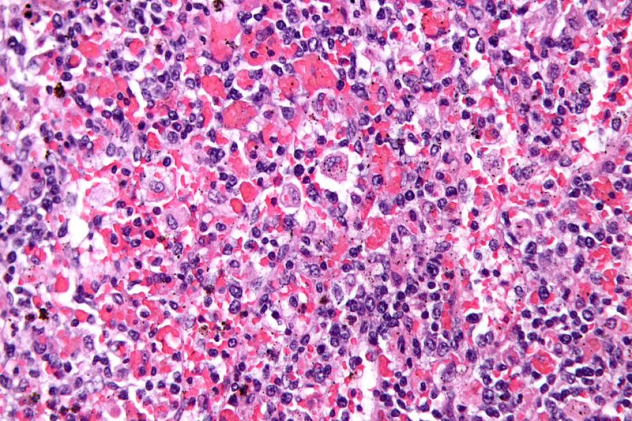
Newlywed Eric Majusiak, age 28, was an active hunter and happy with his career in the Army Corps of Engineers. Life was good. Then, his joints started to ache. He was hospitalized within hours, unable to move properly. For the next two months, Majusiak was unaware of anything around him since doctors kept him in a medically paralyzed and unconscious state while an extracorporeal membrane oxygenation (ECMO) machine kept him breathing. The primary function of an ECMO machine is adding oxygen into the bloodstream. Being on one saved his life during those critical days and also gave him the record for being the longest-surviving ECMO patient that didn’t need a lung transplant.
He was diagnosed with hemophagocytic lymphohistiocytosis (HLH). That mouthful means that his own immune system was killing him by producing too many aggressive white blood cells, which destroyed other cells. This uncommon but devastating autoimmune disorder causes tumors and damage to organs. As if this was not demoralizing enough, Majusiak was told that he also had a second rare disease—Still’s disease, a particularly restrictive and painful form of arthritis, which doctors believe brought on his HLH.
But Majusiak fought the bad news head-on. Despite the fact that he was further hit with a prognosis giving him a 5 percent chance of survival, he relearned how to talk, walk, and breathe on his own again. He endured three months of chemotherapy, strong steroids, and lung dialysis, and was discharged in May 2012, four months after his ordeal began. He went back to work in August.
There is no cure for HLH, and Majusiak continues to go through his days with stiffness and pain. He was told that he would be a “long-term survivor” of the blood disease if he made it for two years. As of this writing, he had already made three years and counting.
6 Deadly Watercress

A disease that is particularly rare in South Africa struck down two women at the same time. Human fascioliasis, or liver rot, was last recorded in 1964, and with the newest unnamed victims, only five cases of it had ever been recognized in the country. The women, one a chef from Plettenberg Bay and the other an elderly pensioner, both ate contaminated watercress that they had bought at farm stalls in the area. The watercress carried a parasite called a liver fluke which, once ingested, traveled through their bloodstreams and nested in their livers. The parasite clings to produce such as watercress, dandelion leaves, lamb’s lettuce, and spearmint and cannot be removed by rinsing the leaves under the kitchen tap.
Since the disease is so rare and hadn’t been seen for almost a generation, doctors went through a lot of theories and tests before they identified the problem as parasitic. The required drug, Triclabendazole, wasn’t available due to the rarity of the disease occurring in South Africa and had to be imported directly from the World Health Organization in New York. The 73-year-old lady recovered, but it was too late for the chef. She died two months after her diagnosis. While not clinically seen as a fatal disease, it remains a very dangerous infection for people (cattle can catch it, too) and can destroy a healthy liver.
5 Ken Estep

Ken Estep, who was rarely ill in his life, was on a family trip when he thought the flu had finally found him. Feeling ragged and tired, the retired Estep visited a clinic but was told that he didn’t have the flu. A couple of days later, another clinic doctor ordered him to go to hospital when he started to experience breathing difficulties. Estep’s health failed with frightening speed. He made it to the emergency room, where he was diagnosed with Legionnaires’ disease, a brutal version of pneumonia that had killed 29 people who attended an American Legion convention in 1976.
Both of Estep’s lungs were afflicted. Hooked to a ventilator and in an induced coma, the medical opinion was that he wasn’t going to make it. However, one week later, the feisty Estep woke up, and went home a couple of days after that. He suffered some disorientation, costing him another trip to the hospital. Despite the fact that he was told he’d need oxygen for the rest of his life, he never did.
It’s hard to say how Estep got infected, but since he was staying in hotels during the family holiday, every pool, hot tub, shower head, and air conditioner was a suspect. One needs to inhale the legionella bacteria in order to develop this type of pneumonia, which is sometimes fatal without treatment.
4 Abigail Beutler
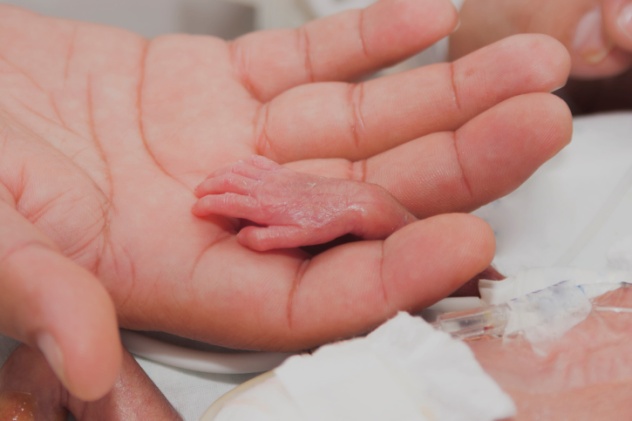
Abigail Beutler was busy kicking her mother, as unborn babies do, while her shattered parents were being told that she was going to die from Potter’s syndrome. The five-month-old fetus had no kidneys. But the trouble didn’t end there. Since the lack of kidneys meant that the baby couldn’t produce fetal urine, there was almost no amniotic fluid. Without amniotic fluid, Abigail’s lungs couldn’t develop.
The Beutlers were so determined to find a way for their daughter to survive that they gave the go-ahead for an experimental treatment. At Johns Hopkins Hospital in Baltimore, the mother, Congresswoman Jaime Herrera-Beutler, was given a weekly injection of a saline solution directly into the womb in an attempt to give the fetus the fluid it needed to develop normal lungs.
The day after the fifth injection, the baby decided to come prematurely. Despite four days of trying to stave off the labor, Abigail arrived and screamed to prove that her lungs were just fine. While the new treatment made Abigail the first baby to beat Potter’s syndrome, she still had to be given dialysis in lieu of her missing kidneys. When she is old enough, she will be given a kidney transplant.
3 Monica
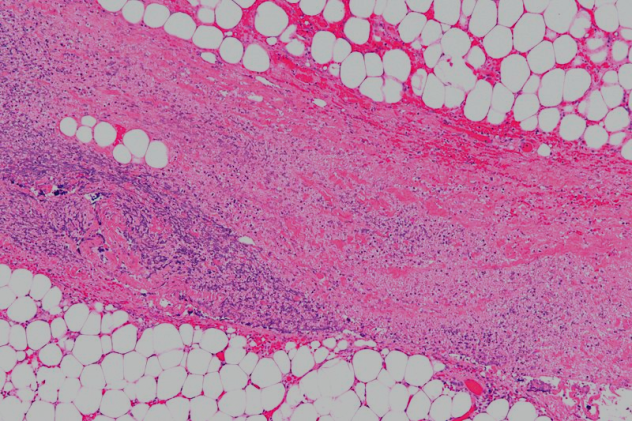
Monica’s ordeal began with a fever hours after giving birth. A C-section had safely delivered a daughter, and at first, Monica thought the fever was just her hormones acting up. But when it refused to break after several days, she was eventually diagnosed with necrotizing fasciitis, a flesh-eating bacteria so vicious that doctors were forced to remove her uterus, ovaries, gallbladder, and a piece of her colon all in one day.
Four weeks later, the infection cost her both her arms and legs after it interfered with the blood flow to her limbs. Monica told the doctors to go ahead with the quadruple amputation because she wanted to go home and continue with her life. After the amputations, Monica spent months in hospital, receiving a further 37 surgeries, getting married to her newborn’s father in the hospital chapel, and committing herself to physical therapy.
She never broke down like the medical staff feared she might, instead deciding to be an example to her children on how to be a fighter. Monica went home in time for Christmas. She missed doing the small things, like braiding her older daughter’s hair, but she accepted her situation, something that would destroy most people.
2 Paul Gaylord
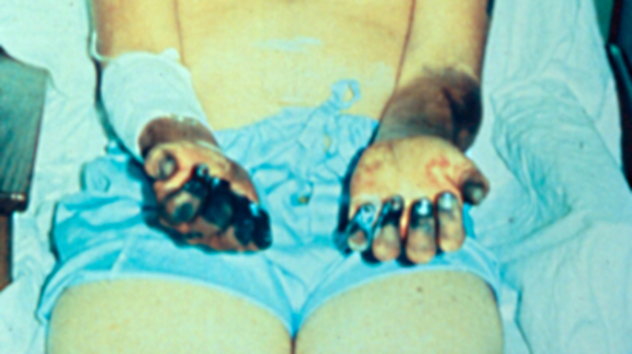
When Paul Gaylord tried to help the family cat, he never envisioned that it would cost him his fingers and toes. The welder from Oregon was attempting to help his pet, who was choking on a mouse, when the cat suddenly attacked him. Gaylord regrettably had to shoot the cat as it was suffering. Two days later, Gaylord woke up with what resembled the flu. A doctor called it “cat scratch fever” and sent him home. A couple of days later, he was admitted to hospital with failing organs and profuse sweating.
To get answers, the family cat was exhumed. Even though up to 10 cases are reported in the US every year, doctors were still in a state of disbelief when the animal tested positive for the black plague. The flea-carried disease that took 50 million lives in medieval times is relatively scarce today.
Gaylord had a particularly severe infection based on how quickly he fell ill, which points to a huge amount of bacteria having been transferred from the cat to him during the attack. Gaylord, 59 years old, had to remain in intensive care for a month before he was deemed a survivor, and doctors still had to amputate his fingers and toes due to the damage caused by the plague.
1 Steve Burkes

Another man who was bitten by his pet would later thank the creature for saving his life. Steve Burkes developed a fever late at night and worried that it was linked to the bites received from their new Amazon green parrot. Steve’s wife accompanied him to the emergency room. What started as a precautionary trip to the hospital turned into a nightmare for the couple.
For two days, doctors at Jennersville Hospital in Chester County, Pennsylvania, tried to stabilize him with antibiotics and a respirator. When his blood pressure dropped through the floor and his lungs, despite the respirator, weren’t working properly, he was flown to Jefferson Hospital in Philadelphia. His condition had so deteriorated that he wasn’t expected to survive the helicopter ride. He did survive it, but his lungs had lost nearly all function.
Steve’s illness was bizarre. It mimicked other diseases, all of which tested negative. Not knowing what they were dealing with, Steve was isolated in a wing with two H1N1 swine flu sufferers. Desperate, they attached him to an ECMO machine. A special bed turned him every three hours, and he remained on a respirator. The 59-year-old was given a 50 percent chance of survival and expected to remain on the ECMO for weeks. Should he live, he also faced months of rehabilitation.
Steve’s recovery was as inexplicable as his mystery disease. He was on the ECMO for only one week, and after another week, good enough to be released. His rehab time totaled one hour. He left the hospital like nothing ever happened. By then, Steve’s stunned doctors still only knew that an unknown virus had been responsible for giving him pneumonia that turned into acute respiratory distress syndrome (ARDS). Steve credited his parrot for saving his life. He was told at the hospital that if he hadn’t gone to the emergency room that night, he would’ve died.




